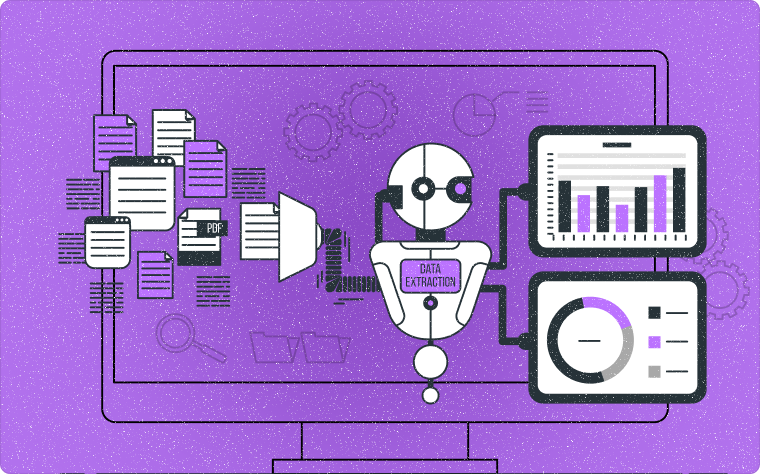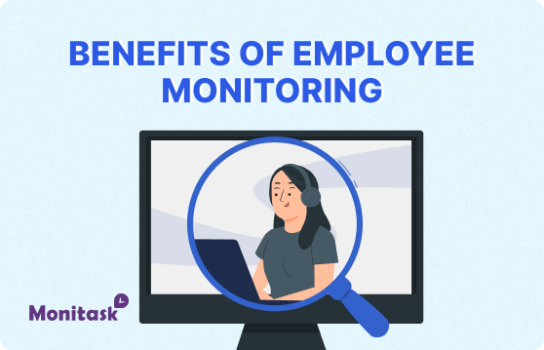Navigating Workplace Rules: Insight intoDisciplinary Infractions and What TheyMean for Employees

Understanding Disciplinary Infractions at Work
Defining Disciplinary Actions
Disciplinary actions in the workplace refer to measures taken by employers to address employee behaviors or performance issues that violate company policies or standards. These actions are designed to correct and prevent undesirable conduct, ensuring a productive and safe work environment.
- Verbal Warning: The first step in addressing minor infractions, often undocumented.
- Written Warning: A formal notice documenting the infraction and the need for correction.
- Suspension: Temporary removal from the workplace, typically without pay, to stress the seriousness of the violation.
- Termination: The most severe consequence, resulting in the permanent dismissal of the employee.
The process is not merely punitive; it also serves an educational purpose, aiming to guide employees back to acceptable standards of conduct. Employers must ensure that disciplinary actions are fair, consistent, and compliant with labor laws to maintain trust and morale within the team.
The Impact of Infractions on Workplace Dynamics
Disciplinary infractions can significantly affect the atmosphere and productivity of a workplace. When an employee violates company policies, it can lead to a ripple effect that impacts team morale and trust. Colleagues may feel unsettled or concerned about the stability of their work environment, which can detract from the overall focus on work objectives.
- Trust and Cohesion: Repeated infractions can erode the foundational trust that teams rely on, making collaboration more difficult and strained.
- Morale and Motivation: Witnessing or being aware of disciplinary actions can demotivate employees, leading to decreased job satisfaction and engagement.
- Productivity: The disruption caused by addressing infractions often results in lost time and resources, hindering the team’s ability to meet deadlines and goals.
It is crucial for management to handle infractions with transparency and fairness to minimize negative impacts. By doing so, they can maintain a sense of justice and order that is essential for a healthy workplace dynamic. Furthermore, clear communication about the situation can help to alleviate concerns and restore focus on collective achievements.
Preventive Measures and Policies
To mitigate the risk of disciplinary infractions, companies often implement a range of preventive measures and policies. These are designed to clarify expectations and provide a framework for acceptable behavior within the workplace.
- Clear Communication: Regularly disseminating the company’s code of conduct and behavioral policies helps ensure that all employees are aware of the standards expected of them.
- Training Programs: Offering training sessions that focus on areas such as conflict resolution, ethical decision-making, and diversity can empower employees to navigate complex situations more effectively.
- Feedback Mechanisms: Establishing open channels for feedback encourages employees to voice concerns or seek clarification on workplace rules before issues escalate.
By proactively addressing potential issues through these measures, organizations can foster a culture of compliance and respect, reducing the likelihood of infractions and the need for disciplinary action.

Types of Disciplinary Infractions and Their Consequences
Minor vs. Major Infractions
In the workplace, infractions are typically categorized as either minor or major, each carrying different levels of severity and consequences. Minor infractions are less serious and often result in warnings or light penalties. Examples include tardiness, unexcused absences, or minor breaches of company policy.
Major infractions, on the other hand, are more severe and can lead to significant disciplinary actions, including termination of employment. These infractions might involve theft, harassment, violation of safety protocols, or other serious misconduct.
Minor Infractions:
- Tardiness
- Unexcused absences
- Minor policy breaches
Major Infractions:
- Theft
- Harassment
- Safety violations
Understanding the distinction between these two categories is crucial for employees, as it affects the approach to resolving the issue and the potential impact on their career trajectory.
Case Studies: Real-World Examples
Examining real-world examples of disciplinary infractions provides valuable insight into how different situations are handled within the workplace. These case studies highlight the diversity of infractions and the corresponding responses from employers.
- Case Study 1: A financial analyst at a large corporation was found to have manipulated data to benefit a friend’s company. This major infraction led to immediate termination and legal action due to the breach of trust and ethical standards.
- Case Study 2: An employee at a retail store was given a written warning for consistently arriving late. The minor infraction was addressed through a performance improvement plan, emphasizing the importance of punctuality.
- Case Study 3: A factory worker faced suspension after failing to adhere to safety protocols, resulting in a minor injury. The incident prompted a review of safety measures and retraining for the entire team to prevent future infractions.
These examples demonstrate the range of consequences that can arise from different types of infractions, from warnings and retraining to termination and legal repercussions. They also underscore the importance of understanding the potential severity of one’s actions within a professional setting.
Once a disciplinary infraction has been confirmed, employees must be prepared to navigate the consequences, which can vary widely depending on the severity of the infraction and the company’s policies. It’s essential to understand the potential outcomes and how they can affect your career trajectory.
- Review the Disciplinary Policy: Familiarize yourself with your company’s disciplinary policy to understand the potential consequences you may face.
- Reflect on the Infraction: Take time to reflect on the actions that led to the infraction. Understanding what went wrong is the first step in preventing future issues.
- Prepare for Meetings: If you are required to attend a meeting regarding the infraction, prepare by gathering any necessary documentation or evidence that may support your case.
- Seek Clarification: Don’t hesitate to ask for clarification on any aspects of the consequences that are unclear to you. It’s important to fully understand what is expected moving forward.
The aftermath of a disciplinary action can be a time for both reflection and proactive planning. Consider the long-term implications of the infraction on your career and take steps to mitigate any negative effects. This might involve setting goals for improvement, seeking mentorship, or engaging in additional training. Remember, the goal is not just to move past the infraction, but to emerge as a more informed and conscientious employee.

The Disciplinary Process: What Employees Should Expect
Initial Reporting and Investigation
When an employee is suspected of a disciplinary infraction, the initial reporting and investigation phase is crucial. This process typically begins with a report or complaint made to a supervisor or the human resources department. It’s important for employees to understand what to expect during this phase.
The investigation will generally follow these steps:
Throughout the investigation, confidentiality is maintained to protect the parties involved. Employees should be aware that the duration of the investigation can vary depending on the complexity of the case and the thoroughness of the evidence required. It’s also important for employees to know that they have the right to be informed about the status of the investigation and to seek representation if they feel it’s necessary.
Hearings and Reviews: A Step-by-Step Guide
When an employee is facing a disciplinary hearing or review, it’s crucial to understand the process to prepare adequately. Here’s a step-by-step guide to what you can expect:
During the hearing, the process typically follows these steps:
After the hearing, the review panel will deliberate and make a decision regarding the infraction. The outcome can range from no action to various levels of disciplinary measures. Employees should be informed of the decision in writing, along with any next steps or appeals processes available to them.
Rights and Representation for the Accused
When facing disciplinary action, employees have certain rights that protect their interests throughout the process. It’s crucial to be aware of these rights to ensure fair treatment and to mount an effective response if necessary.
- Right to be informed: Employees should receive clear communication about the nature of the accusations and the potential consequences.
- Right to representation: Whether through a union or a private attorney, employees have the right to seek representation to guide them through the disciplinary process.
- Right to a fair hearing: Accused individuals are entitled to a hearing where they can present their side of the story and challenge any evidence against them.
- Right to appeal: If the outcome of the disciplinary action is unfavorable, employees typically have the right to appeal the decision within a specified timeframe.
Understanding these rights can empower employees to participate actively in their defense and can help ensure that the disciplinary process is conducted equitably. It’s also advisable for employees to familiarize themselves with any additional protections provided by their local laws or company-specific regulations.

Best Practices for Responding to Disciplinary Actions
Self-Advocacy and Communication Strategies
Effective self-advocacy is crucial when facing disciplinary actions in the workplace. It involves understanding your rights, the details of the accusations against you, and the procedures that will be followed. Clear and assertive communication can help clarify misunderstandings and present your perspective in a professional manner.
- Know Your Rights: Familiarize yourself with your employment contract, company handbook, and any relevant labor laws. This knowledge is your foundation for self-advocacy.
- Gather Facts: Collect all pertinent information and documentation related to the infraction. This may include emails, witness statements, or any other evidence that supports your case.
- Prepare Your Response: Develop a clear and concise response to the allegations. Practice delivering your statement to ensure confidence and clarity.
- Listen Actively: During discussions or hearings, listen carefully to the points being made. This will allow you to respond appropriately and address specific concerns.
Remember, the goal is to engage in a dialogue that can lead to a fair and just resolution. It’s also important to remain calm and respectful throughout the process, as emotions can escalate and potentially harm your position. If necessary, seek advice from a trusted colleague, mentor, or legal representative to help navigate the situation.
Seeking Support: Legal and Union Representation
When facing disciplinary actions, it’s crucial for employees to know where to turn for support. Legal and union representation can provide a safeguard against unfair treatment and ensure that an employee’s rights are protected throughout the process. Here are some steps to consider when seeking support:
- Identify Your Representation: Determine if you are part of a union and who your representative is. If not, research employment lawyers who specialize in workplace issues.
- Understand Your Rights: Familiarize yourself with your legal rights and the specific procedures outlined in your employment contract or company handbook.
- Initiate Contact Promptly: Reach out to your representative or legal counsel as soon as possible to discuss your case and plan your response.
- Prepare Documentation: Gather all relevant documents, such as emails, witness statements, and any evidence that supports your case.
- Follow Advice: Work closely with your representative or lawyer, and follow their advice on how to proceed, including what to say and what actions to take during hearings or investigations.
Legal and union support can not only assist in navigating the disciplinary process but can also help in negotiating settlements or reinstatements if necessary. It’s important to act swiftly and to keep detailed records of all interactions related to the disciplinary matter. Remember, the goal is to achieve a fair and just outcome, and having professional support can significantly influence the resolution of your case.
Learning from the Experience: Growth and Development
Experiencing disciplinary action in the workplace can be a challenging ordeal, but it also presents an opportunity for personal and professional growth. Reflecting on the incident and the behaviors that led to it is the first step towards turning the situation into a learning experience.
- Reflect on the Incident: Take time to understand what happened and why. Consider the factors that contributed to the infraction and acknowledge your role in the situation.
- Seek Feedback: Engage with supervisors or mentors to gain insight into how you can improve. Constructive criticism is invaluable for development.
- Set Personal Goals: Identify specific areas for improvement and set achievable goals. This could involve enhancing certain skills or adjusting workplace behaviors.
- Embrace Change: Be open to making changes in your approach to work. This might mean adopting new strategies for time management, communication, or problem-solving.
By actively engaging in this process, employees can not only rectify past mistakes but also enhance their resilience and adaptability, which are crucial skills in any career. This proactive stance can lead to improved performance, better relationships with colleagues, and a more positive reputation within the company.

Preventing Future Infractions: Tips for Employees
Understanding and Adhering to Company Policies
Familiarity with company policies is the cornerstone of preventing workplace infractions. Employees are expected to not only be aware of the rules and regulations but also to understand the rationale behind them. This understanding fosters a sense of responsibility and helps in making informed decisions that align with the company’s values and legal obligations.
To ensure adherence to company policies, consider the following steps:
- Review the Employee Handbook: Make it a habit to read and revisit the employee handbook regularly. This document is often a comprehensive guide to your company’s policies and expectations.
- Stay Informed about Updates: Policies may change, and it’s crucial to stay updated. Attend policy-related meetings, subscribe to internal newsletters, and check for announcements on the company intranet.
- Ask Questions: If any policy is unclear, seek clarification from your manager or human resources department. It’s better to ask questions than to make assumptions that could lead to infractions.
- Participate in Training Sessions: Engage in any offered training sessions that focus on policy education. These sessions can provide deeper insights into the ‘why’ and ‘how’ of policies.
Understanding and adhering to company policies not only helps in avoiding disciplinary actions but also contributes to a more harmonious and efficient workplace. By taking these proactive steps, employees can ensure they are contributing positively to their work environment.
Professional Development and Training Opportunities
Investing in professional development and training is a proactive way to prevent workplace infractions. These opportunities equip employees with the knowledge and skills necessary to perform their duties effectively and in compliance with company policies.
- Regular Training Sessions: Attend these to stay updated on the latest workplace regulations and expectations.
- Skill Enhancement Programs: Enroll in courses that improve job performance and understanding of industry standards.
- Mentorship Programs: Seek guidance from experienced colleagues who can provide insights into navigating complex workplace scenarios.
By taking advantage of these resources, employees can foster a culture of continuous learning and improvement. This not only minimizes the risk of infractions but also contributes to personal career growth and overall organizational success.
Creating a Positive and Compliant Work Culture
Fostering a positive and compliant work culture is essential for minimizing disciplinary infractions and promoting a harmonious workplace. This involves a collective effort from both management and employees to create an environment that values respect, integrity, and accountability.
Key strategies include:
- Clear Communication: Regularly articulate the company’s values and expectations to ensure everyone is on the same page. Open dialogue about policies and procedures can prevent misunderstandings that may lead to infractions.
- Lead by Example: Management should model the behavior they expect from their employees. When leaders uphold high standards, it sets a precedent for the rest of the team to follow.
- Positive Reinforcement: Recognize and reward compliance and positive behavior. This not only encourages adherence to rules but also boosts morale and job satisfaction.
- Constructive Feedback: Provide timely and constructive feedback to employees who may be at risk of committing infractions. Early intervention can correct behavior before it escalates into a more serious issue.
- Inclusive Decision-Making: Involve employees in the creation and revision of workplace policies. This inclusion fosters a sense of ownership and commitment to the rules they helped shape.
By integrating these practices into the daily operations, organizations can cultivate a culture that naturally deters infractions and supports a productive, respectful, and compliant workforce.
Conclusion
Navigating workplace rules and understanding the implications of disciplinary infractions is crucial for maintaining a harmonious and productive work environment. Throughout this article, we’ve explored the meaning of disciplinary infractions, provided examples, and offered insights into what they mean for employees. It’s important for employees to be aware of their company’s policies, to understand the potential consequences of their actions, and to know their rights within the workplace. Employers, on the other hand, should strive to create clear, fair, and consistently applied rules to foster a culture of respect and accountability. By staying informed and mindful of these guidelines, both employees and employers can work together to ensure a positive and professional workplace for all.
Frequently Asked Questions
Can you provide examples of disciplinary infractions?
Examples of disciplinary infractions include repeated lateness, failure to meet performance standards, insubordination, misuse of company property, and breach of confidentiality.
What impact do infractions have on workplace dynamics?
Infractions can lead to a breakdown in trust, lower morale, and increased tension among employees. They can also affect productivity and the overall work environment.
What is the typical process for addressing a disciplinary infraction?
The process usually begins with an initial report and investigation, followed by hearings or reviews where the employee can present their case. Consequences are then determined based on the severity of the infraction.
What rights do employees have when accused of a disciplinary infraction?
Employees have the right to be informed of the accusations, present their side of the story, seek representation from a union or legal advisor, and appeal decisions if necessary.
How can employees prevent future disciplinary infractions?
Employees can prevent future infractions by thoroughly understanding and adhering to company policies, participating in professional development, and contributing to a positive and compliant work culture.


